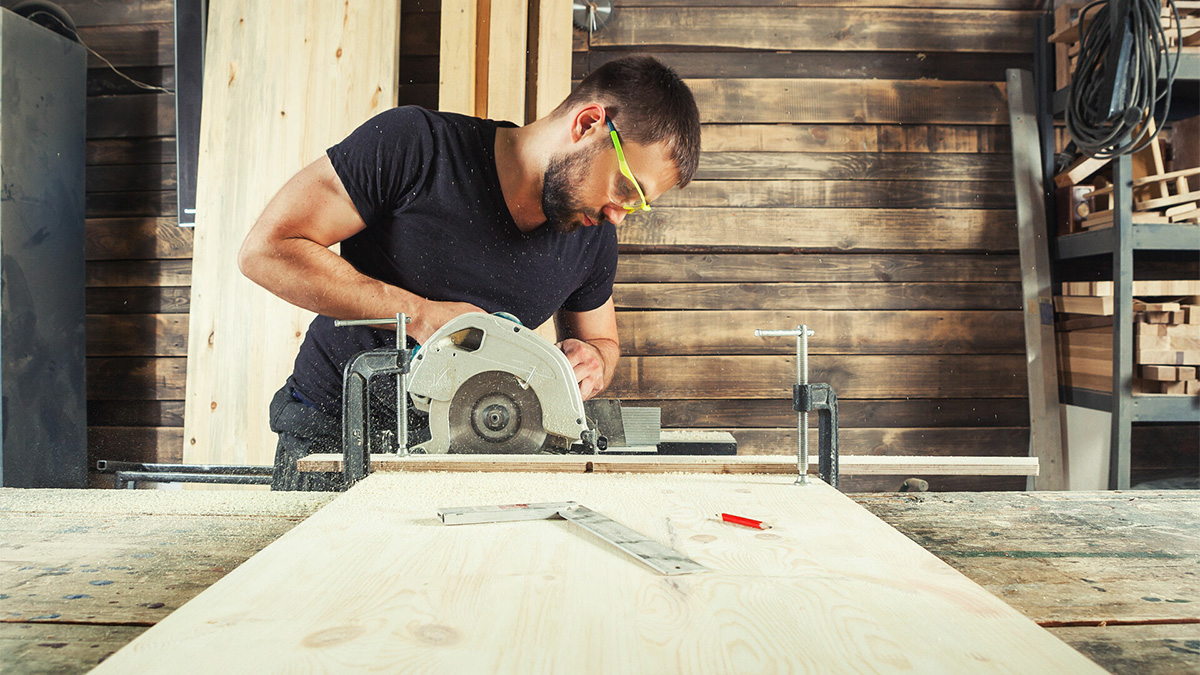"If you want to do a good job, you must first sharpen your tools." Furniture production is inseparable from woodworking machinery and woodworking knives. At present, there are many types of woodworking machines available in the market. Due to all the developments made in the area of woodworking machines, woodworkers all around the world are able to choose from a vast array of tools and machines in order to accomplish their work. This article will take stock of some common woodworking equipment for you, and introduce you to their functions, methods, and precautions.
- Woodworking Planer
There are many types of planers, according to the process use and structure: flat planer, pressure planer, four-sided planer, polishing machine, etc.
A planer is used to accurately plan the reference surface of the workpiece blank, and it can also process the surface adjacent to the reference surface as an auxiliary reference surface. There are manual feed and mechanical feed, as well as single-axis and double-axis points.
A press planer is used to process the opposite surface that has been planed to the reference plane to be smooth and parallel to the reference plane. The thickness and width of the workpiece can be fixed by pressing and planning, all of which are mechanically fed.
The four-sided planer is used to process four sides of the workpiece at the same time in one feed. It is highly efficient due to the use of mechanical feed and multi-tool axis processing.
A polishing planer can be used for the final finishing of the surface of the parts.
- Woodworking Edge Banding Machine
An edge banding machine, as the name suggests, is used to glue a decorative band to the edge of a piece of wood. The edge banding machine generally applies the band to the straight edge of a piece of wood, but there are also edge banding machines that can add an edge band to curved and special-shaped workpieces.
An automatic edge banding machine can complete many processes such as pre-milling, gluing, cutting, front and rear alignment, upper and lower trimming (rough trimming), upper and lower fine trimming, upper and lower scraping, and polishing. Edge banding machine can be used to put an edge band on high density fiberboard, block board, solid wood board, particle board, polymer door panel, plywood, etc.
- Woodworking Cold Press
The cold press is used to press furniture panels, wooden doors, various panels and furniture for leveling and shaping.
Woodworking cold presses can be roughly divided into types: screw type and hydraulic type. Generally, the performance of hydraulic cold presses is better in all aspects. Hydraulic cold presses are quiet and the lifting speed is fast. However, if the hydraulic system is poor or not well maintained, oil leakage will occur, so a good quality hydraulic system can prevent problem from poor oil seals.
- Woodworking Milling Machine
The milling machine is a universal type of equipment which can complete a variety of woodworking processes. It can be used for cutting curves, straight lines and forming various shapes into a piece of wood. They are also used for tenoning and other assembly operations.
Milling machines can be single-axis, dual-axis, and multi-axis, depending on the number of spindles. Single-axis vertical milling machines are the most commonly used type of milling machines. They are divided into upper-axis and lower-axis types, and most of them use manual feed.
A milling cutter is the cutting head tool that fits into the milling machine. There is a wide variety of cutters used in furniture manufacturing, wooden floor production and other wood product production.
- Woodworking Engraving Machine
Engraving machines can be used to add aesthetically pleasing shapes and designs to woodwork. There are many types and brands of woodworking engraving machines which can be customized according to customer needs.
- Woodworking CNC Tool Machine
An industrial woodworking CNC machine tool refers to a wood processing machine controlled by computer digital signals. A CNC machine tool combines modern computer technology and traditional machining. If the CNC machining tool has multiple functions (e.g., milling, drilling, planning, etc.), it is called a machining center.
According to the processing technology used, there are CNC milling machines, CNC drilling machines, and multi-function CNC machine tools (machining centers). They can process work on single-axis, 2-axis, 4-axis, 6-axis, etc., according to the number of spindles, and come in various shapes and structures.
- Jigsaw
Jigsaws cut with a reciprocating motion and are mainly used for sawing arcs in a workpiece. There are two types of jigsaws: vertical and horizontal.
A vertical jigsaw is a jigsaw mounted on a stand and has a bottom table that supports the workpiece. The table can be adjusted to any angle between 90° and 45° with the saw blade. When sawing straight edges, the bottom plate is perpendicular to the saw blade. When operating, hold the workpiece with both hands and slowly push the piece into the blade.
The horizontal jig saw has no table or bottom plate. When operating, hold the saw with both hands with the handle with the right hand and the body of the saw in the left hand and push the saw along the cutting line.
- Woodworking Sander
Sanding is widely used in the production of furniture and wood products. It uses abrasives to create a smooth decorative surface on a workpiece and is usually the last step in the machining process for furniture and wood products.
The most commonly used sanding machine in most woodworking shops is the belt sander. They can be single-belt, double-belt and multi-belt, according to the number of abrasive belts used. Automatic sanding machines come in various configurations and can sand the top, bottom or sides of a workpiece.







.png)






